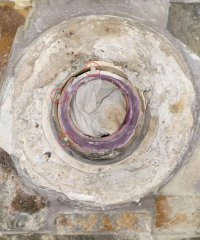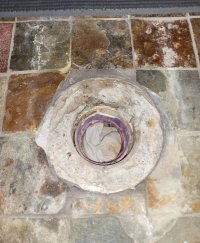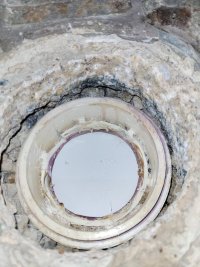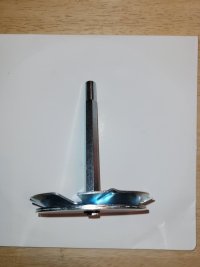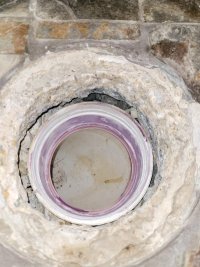.. for a flange I think you have enough material to work with so long as the riser and flange are firmly supported by the slab that you will fill in around with some form of mortar. Since you have the ability for 4" pipe coming up out of the ground now you can buy a closet flange that glues to the Inside of the pipe. you will be able to get mortar all around the pipe without worrying about getting a hub flange Over the pipe.
Thanks, yeah this is exactly the plan, fill it in and tapcon a proper stainless 4in flange.
[Now if the outer wall of the bushing was the same thickness as a 4" piece of pipe, the socket saver tool should work as normally. But there's no reason to expect that to be true. Judging from the picture and that the tool took away too much from the hub, the ID of the outer wall of the bushing was a bit larger than the ID of a 4" pipe. So the guide bushing moved around inside the outer wall of the bushing, making the effective cutting diameter larger than the OD of a 4" pipe.]
I think this is exactly the reason it didn't work for this particular fitting. I could see the play and was suspicious - visually the difference between this bushing wall thickness and standard 4 pipe is extremely small, so started and looked ok but it got progressively worse so I stopped, luckily with what I gather is still enough material to secure a new piece of pipe, it's very snug at that point.
A few observations/questions:
1. Reach4's suggestion of using 2-part epoxy - taking that in a slightly different direction. Use plastic epoxy (jb plastic weld or similar) to fill in the area's torn up from the socket saver before adding the new bit of 4in riser? It will be short, about 4.25in long, but enough to insert the closet flange.
2. I only mention the following because of the forces applied during the socket saver work and hammering with a chisel - This pipe run feels pretty solid under the slab, but it's short run, less than 3ft away from the main house septic drain. Taking a look, it's the elbow you see in the photo, to a short 1ft lateral run, then another fitting with a bend that probably connects it to the drain. There's is a tiny bit of vertical movement in this assembly at the elbo fitting i've been working on, maybe a 1/16in at most. Nothing lateral. I'm assuming not much to worry about regarding stresses on the pipe/fitting with so little movement in the pipe?
3. Seems like getting some drop in this pipe would have been a challenge with so little room to move up or down. Things obviously flow out of the pipe but there's a little bit of standing water left sitting on the bottom of the lateral run, maybe an 1/8, is this normal?
Really appreciate the feedback here, helps a lot!

